
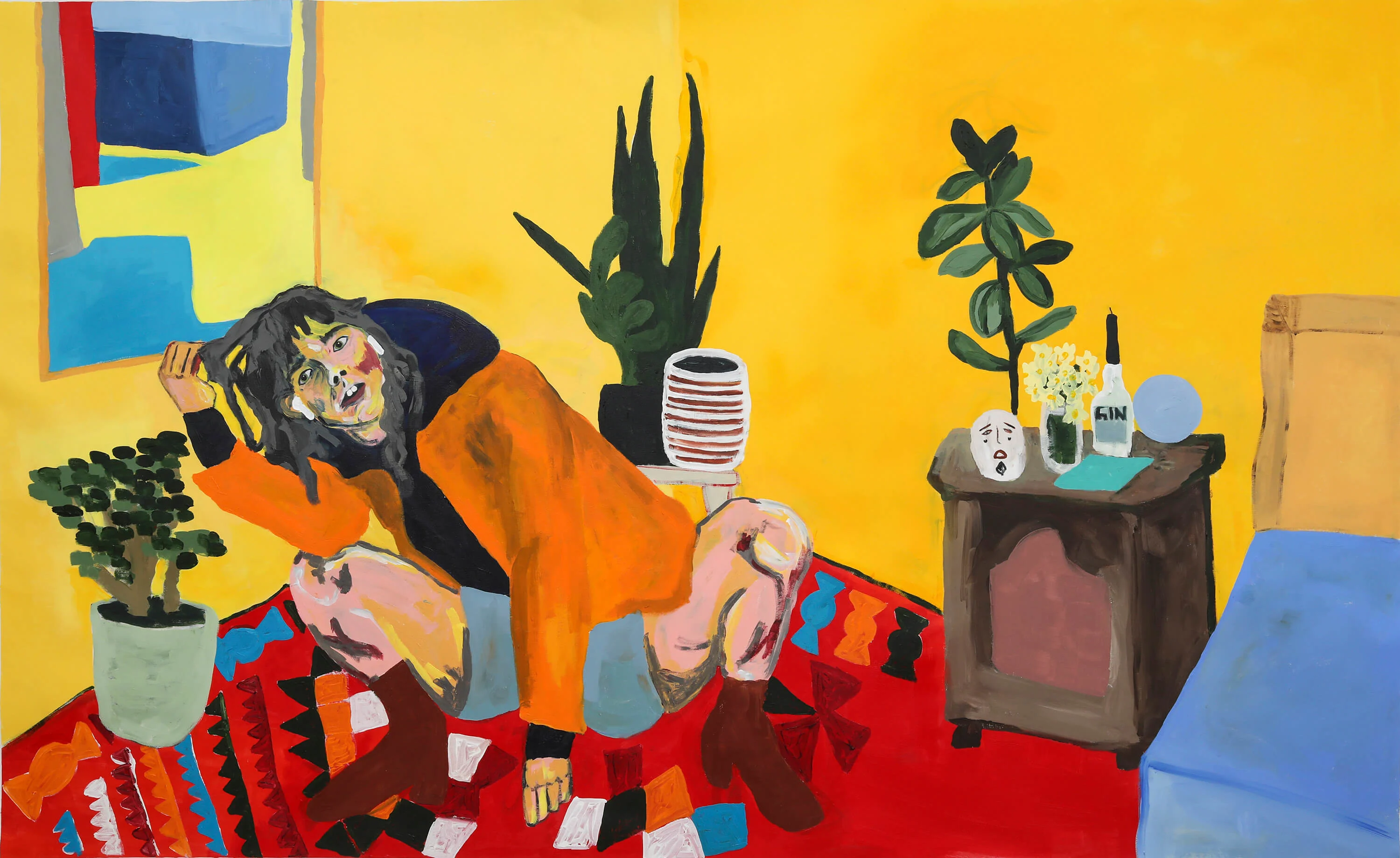
Dora Dalila Cheffi was born in Helsinki to a Finnish mother and a Tunisian father. They divorced when she was three, bifurcating language, culture, and country. Summers were spent in Sfax, where Dora’s father is from, and the rest of the year in Helsinki, where her father lived with his new Tunisian wife. Writer Sarah Souli explains why the work of this Finnish-Tunisian artist speaks to her so directly.
Growing up, I spent summers in Tunis with my father’s family, long, hot months marked by a sudden influx of playmates in the form of endless cousins and bookended with food poisoning: the result of a weakened, American stomach. As a child used to the gilded shine of the States, visiting my father’s country felt like more of a familial obligation than anything else. It wasn’t until I moved to Tunis to work as a journalist in 2015 that I properly fell in love with my roots, with the city and, more specifically, with the curiously-designed Hotel du Lac.
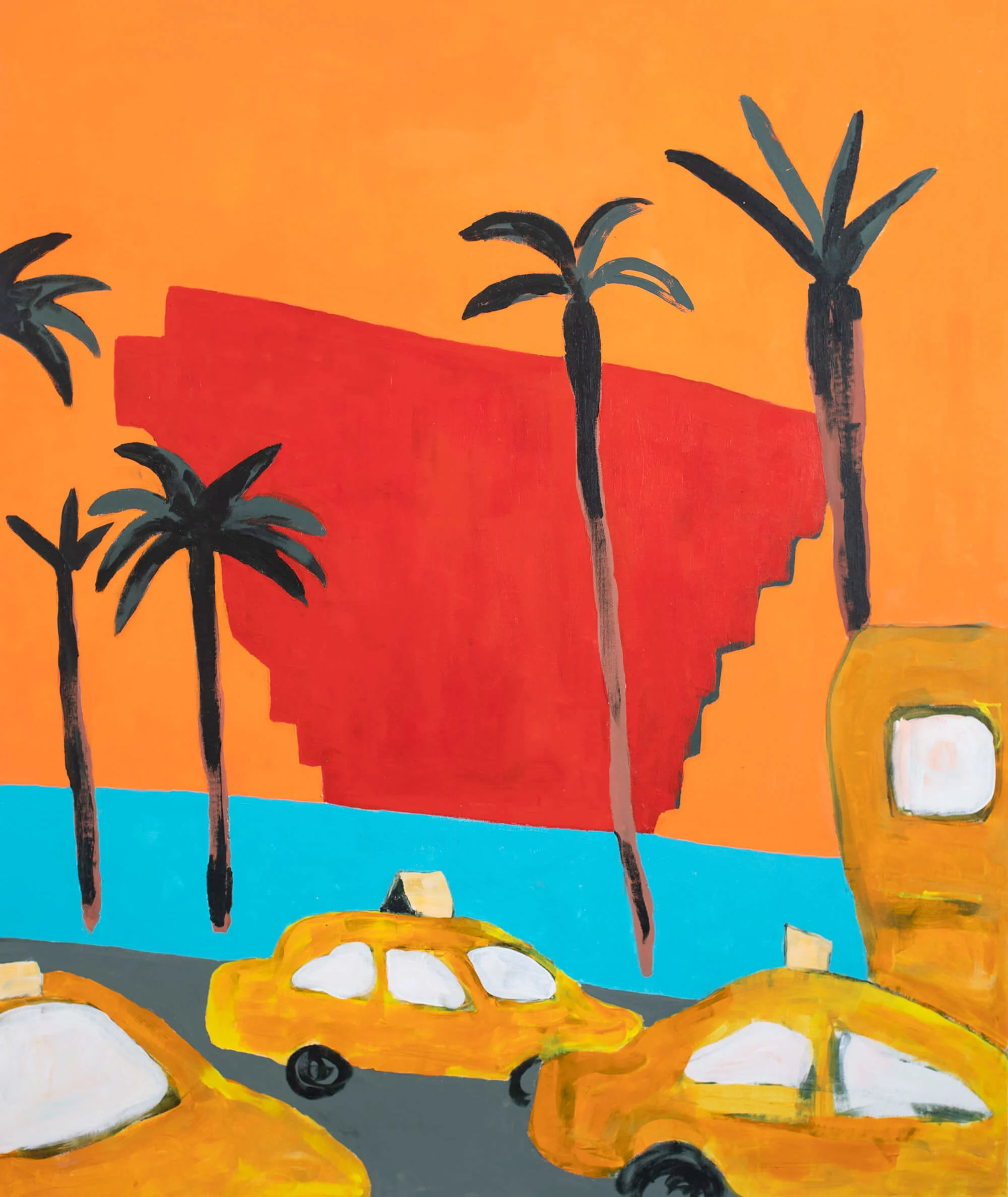
Built like an enormous, Brutalist ship in the heart of downtown Tunis, fantastical stories swirl around the now-abandoned, arrow-shaped hotel: former dictator Habib Bourguiba saw the architect’s drawing upside down and insisted it be built in this gravity-defying way; it inspired the Sandcrawler vehicles of Star Wars; the hotel is always on the rumored edge of demolition. In the afternoons, the windows catch the light, turning the entire building a glittering orange.
“When I saw Hotel du Lac for the first time, of course I thought it was great – weird and bizarre and beautiful,” Dora Dalila Cheffi, the 29-year-old Finnish-Tunisian artist tells me from her studio in the seaside suburb of Gammarth. Dora’s interpretation of the building – painted crimson against an orange sky, the building partially obfuscated by spindly palm trees as yellow taxis zip by – is my favorite in her growing body of work, capturing the sights and emotions of Tunisia from the perspective of someone who grew up between two cultures.
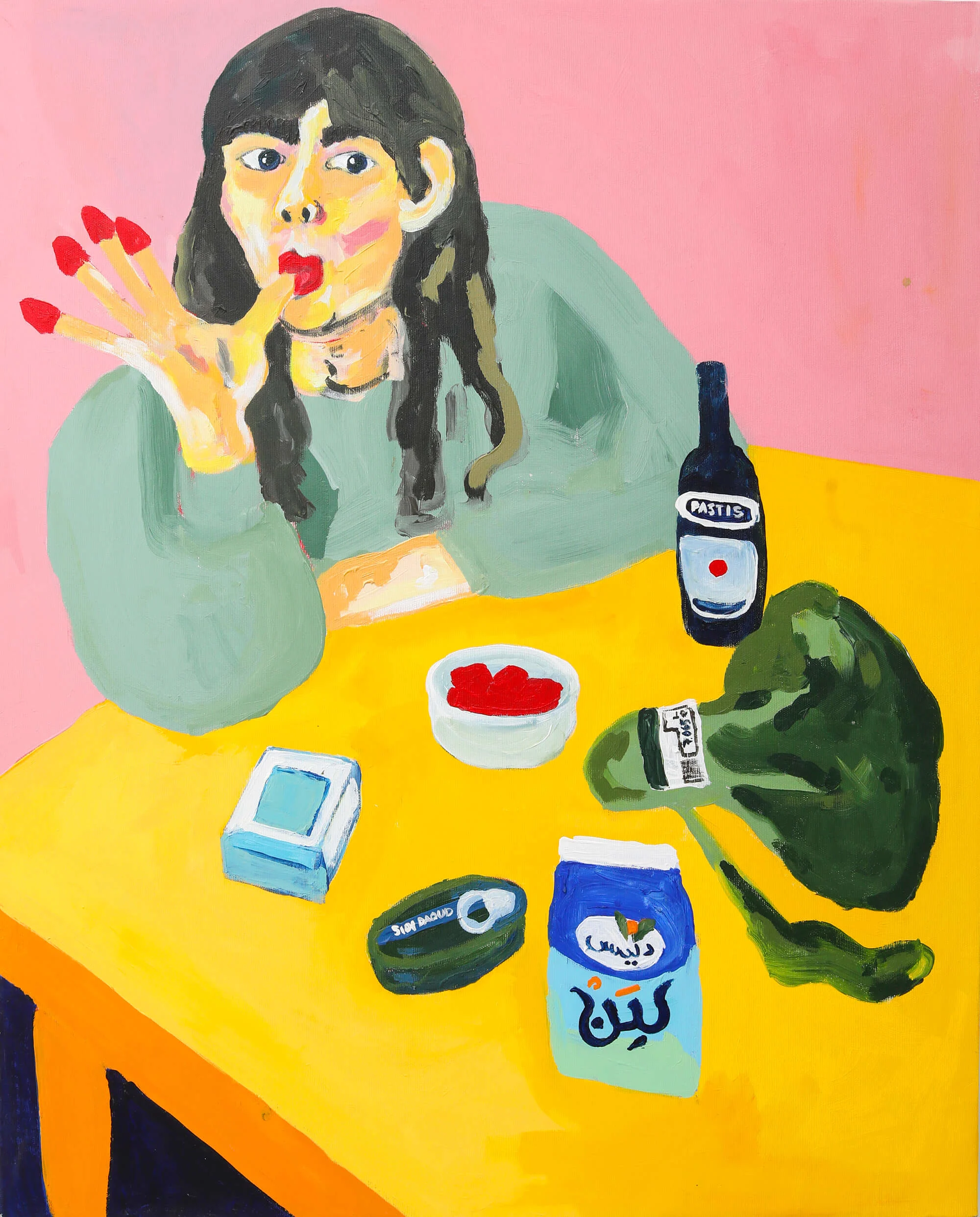
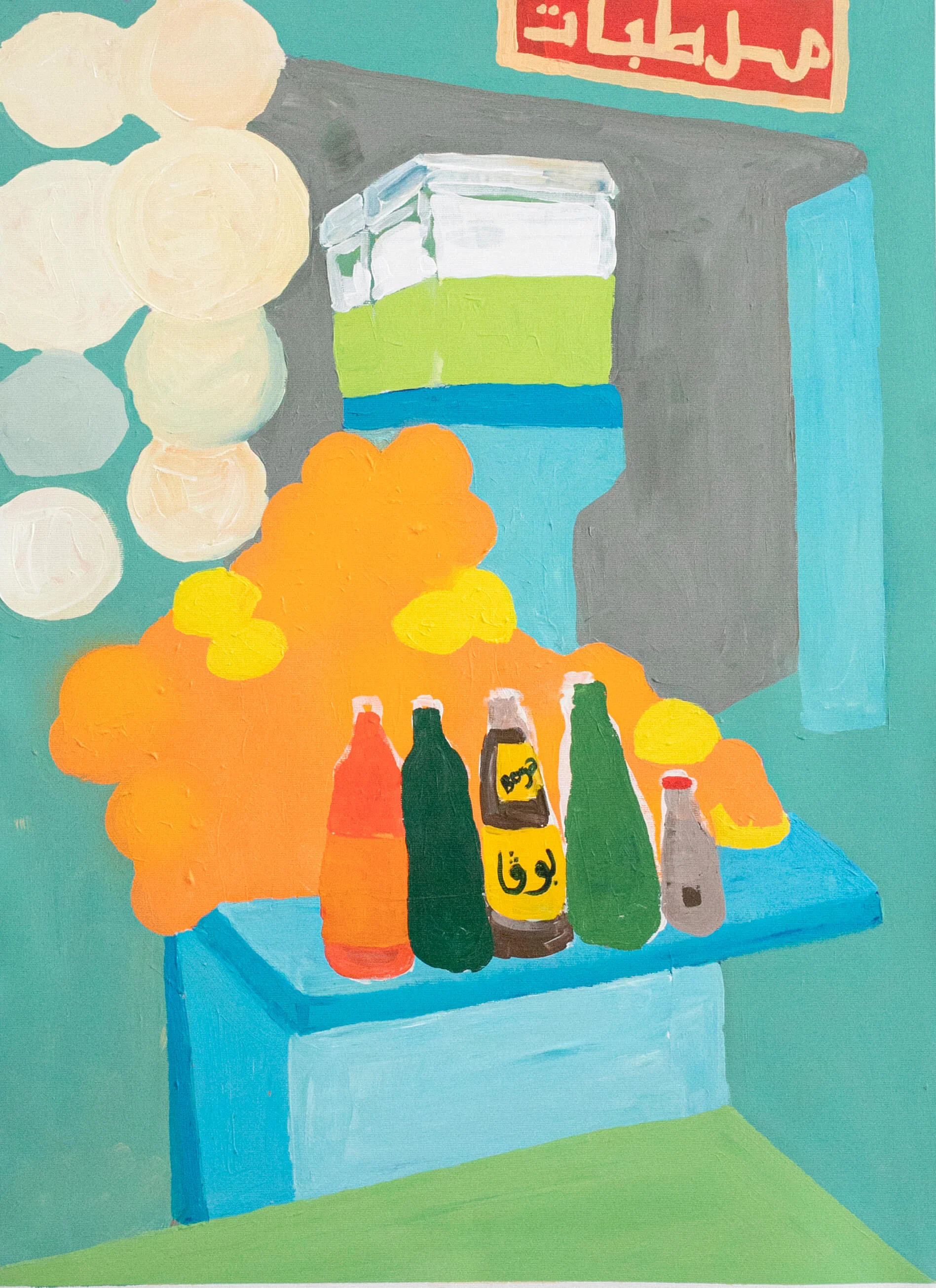
There’s a possibility to mix two different cultures and create something new.
I was first drawn to Dora’s work because, like her, I grew up with a European mother and a Tunisian father outside of Tunisia. In Tunisian Arabic, we’re called “nus-nus” which translates as “half-half.” It was enough of a connecting thread that her bold, colorful works kept smacking me across the face with the wrinkled hand of nostalgia. A painting of a headless person eating slata tounsia while four untouched brik a l’oeuf grow cold around the table made me salivate for my own grandmother’s handmade brik.
There’s the self-portrait of Dora eating raspberries off her fingers, Amélie Poulain style, which reminds me of the day I found raspberries in my neighborhood supermarket in the middle of winter and audibly shrieked with joyous surprise. Tunisia is known for citrus and figs and cactus fruit, sunny Mediterranean things, not forest berries. Lopsided bottles of gazuza (Tunisian slang for soda, much jollier, in my opinion) recall the soda bottles that crowd tables in restaurants in lieu of wine or beer.
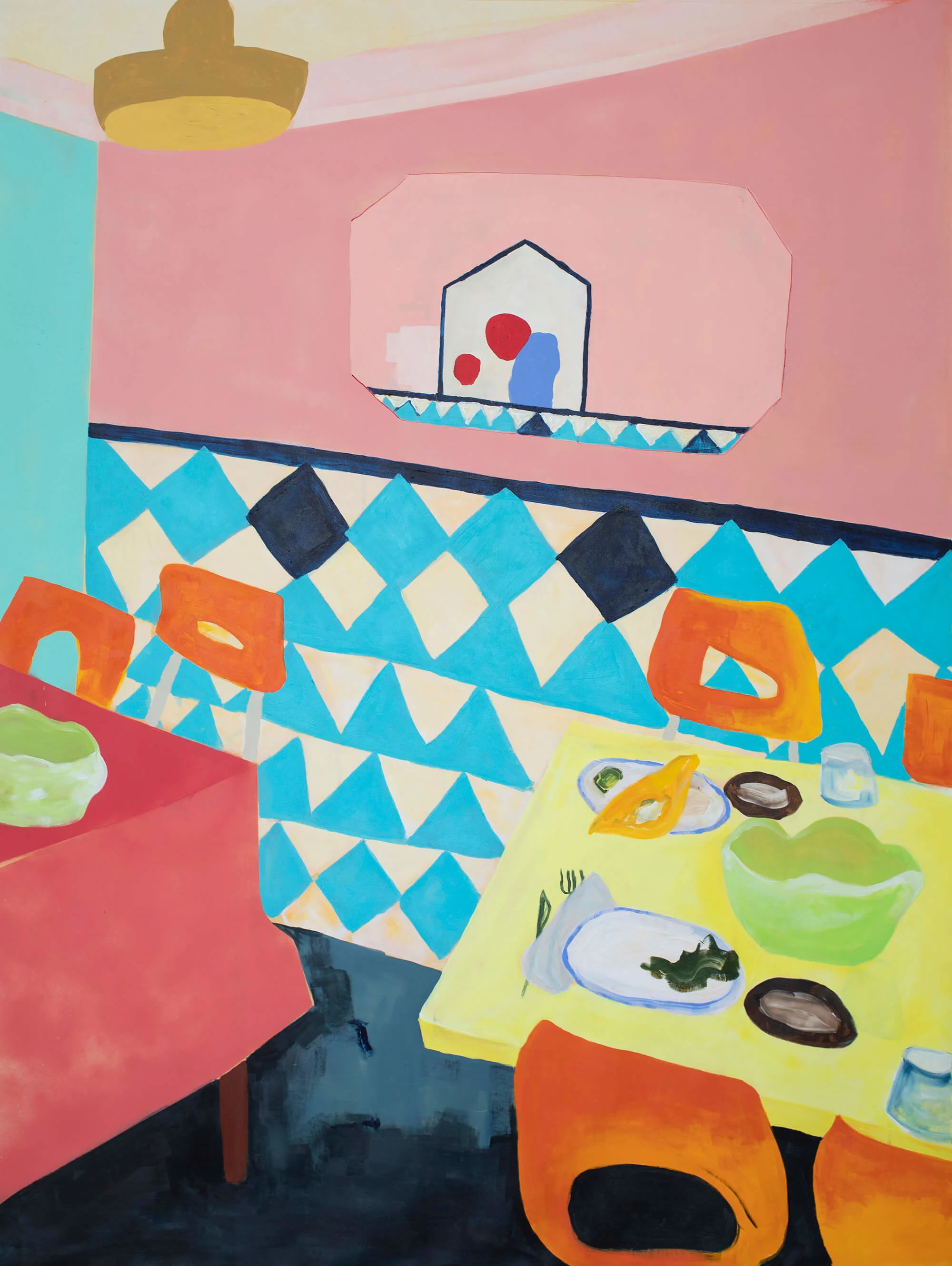
Unlike Morocco, which has internationally recognized artists like Hassan Hajjaj, or Gulf countries that have poured millions into building Guggenheim and Louvre offshoots, Tunisia’s art scene is insular and not particularly well known. But it is growing, bolstered by organizations like the Kamel Lazaar Foundation and the experimental art space B7L9. “I think is part of a wave of young creatives that are looking to make work on their own terms, perhaps outside the context of the art community that has been historically elitist and Francophone,” says Katherine Li Johnson, Dora’s close friend and a Tunis-based multimedia creative strategist. “I think there’s a want for something more accessible and egalitarian.”
Though most of her work is sold in Finland, it’s since moving to Tunisia a year and a half ago that Dora has found her style – not exactly Tunisian, but not entirely European either. “I’m doing this for myself most of all, but I’m also doing it for people like me,” Dora tells me. “To see that there’s a possibility to mix two different cultures and create something new.”
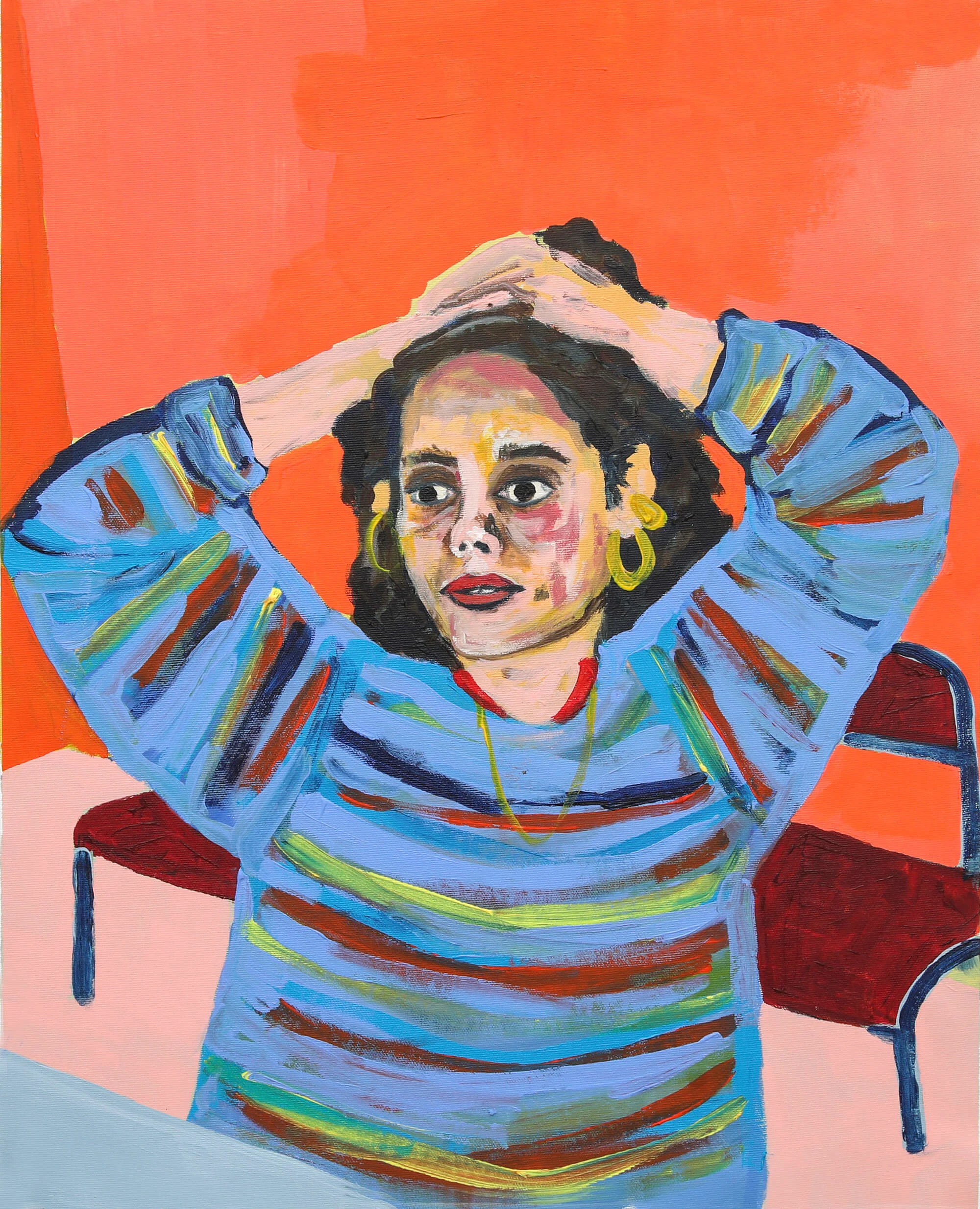
Dora was born in Helsinki to a Finnish mother and a Tunisian father. They divorced when she was three, bifurcating language, culture, and country. Summers were spent in Sfax, where Dora’s father is from, and the rest of the year in Helsinki, where her father lived with his new Tunisian wife. “I was this Finnish teenager living with her mom but every other weekend I had to be this Tunisian girl at her dad’s house. I only understand now how weird that is,” Dora says. There’s academic jargon to explain this now, of course – code-switching, or the practice of changing languages or ways of communication between groups of people – but growing up in the ‘90s and ‘00s, it was just life.
My own mother is French; her country colonized my father’s country from 1881 to 1956, a political reality that produced, among many other things, a litany of post-Independence, half-Tunisian half-French kids conceived from the economic and educational migration in the ‘70s and ‘80s. It’s a complicated and violent history, but it’s also true that France and Tunisia today share many cultural, culinary, and linguistic similarities, some forced, some the byproduct of time and osmosis. Finland, Dora points out, is “pretty neutral.”

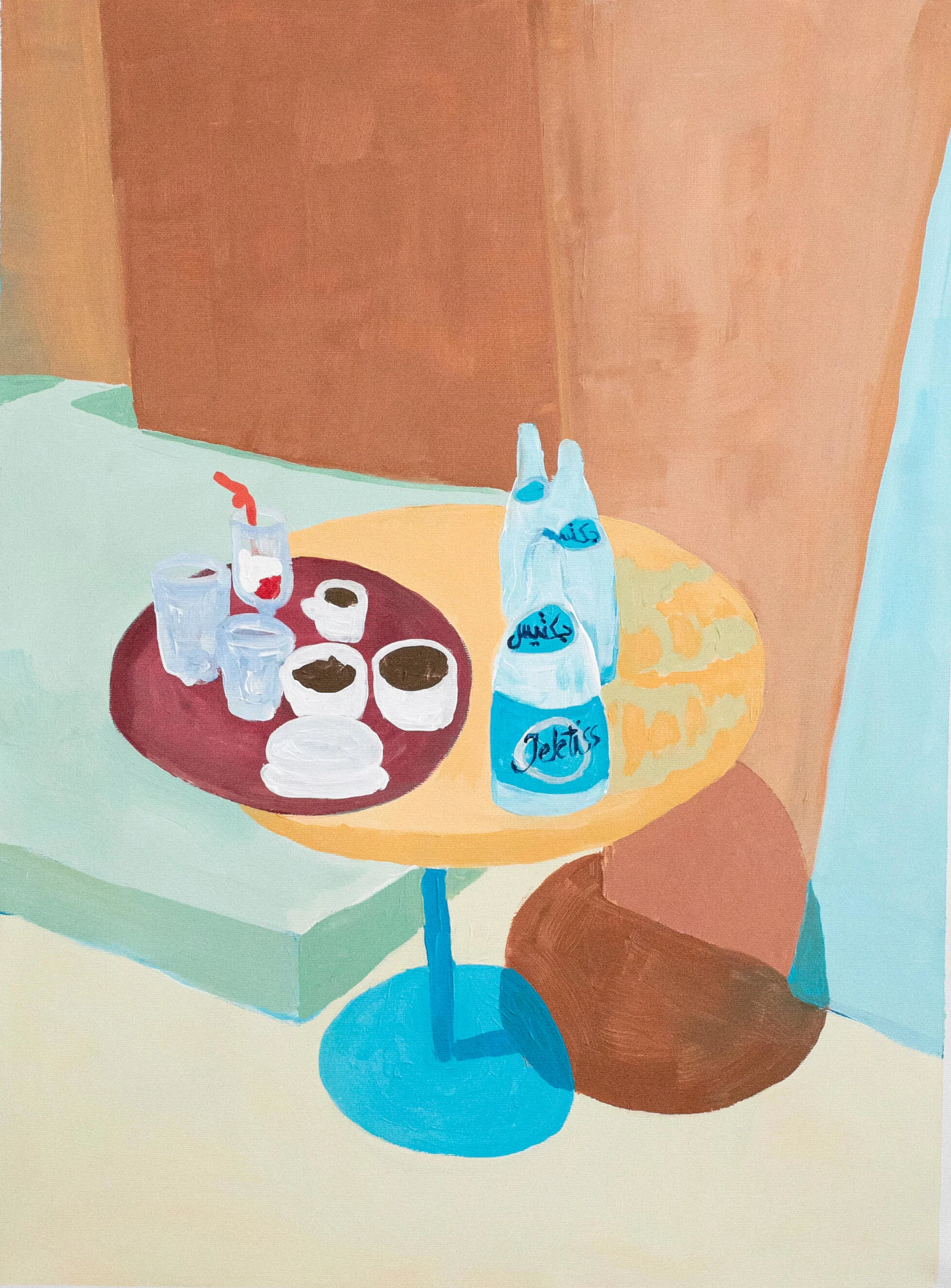
“Now is known as the happiest country in the world with the best education, and people would be like, ‘why the fuck would you leave that and come here?’” she says. “For the most part it’s just understanding that it’s quite a cool mix. Most of my life I was just like, these two countries and cultures are so different, how can they ever mix naturally? But it mixes naturally in me.”
When Dora was 19, she went to work briefly at her father’s plumbing company before applying to art school. She only liked taking photos, and applied for a Bachelor’s in art education. “I wasn’t interested in becoming an art teacher,” she explains, “ just had the basics of everything from ceramics to animation to textile that you would possibly want to learn.”
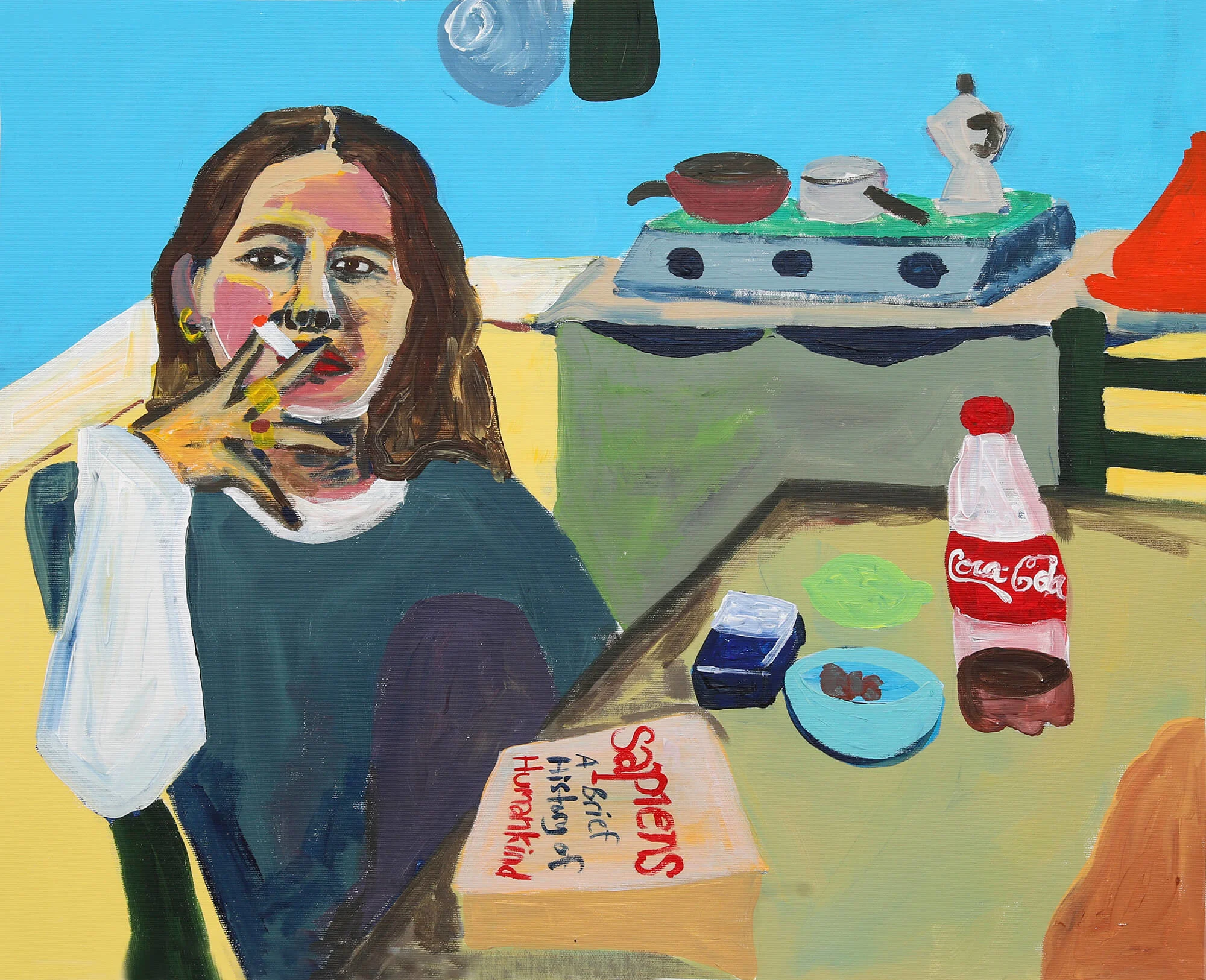
In her series Tunisian Sceneries, the country is depicted in vivid colors and slightly skewed proportions. “With that series, the bold colors I started using came from a very childlike naïve happy place. When I first moved here I thought everything was so wonderful, I was looking at everything through pink glasses,” she says.
Colors are important in Dora’s work, but they are not always intentional and are sometimes different then the ones she’s imagined. There are strict custom laws in Tunisia, and shipments of paint can sometimes be delayed at the border for months; local shops don’t have the endless choice of European art supply stores. It’s a reality for all Tunisian artists, an issue that Dora says can be frustrating, but forces her to adapt.

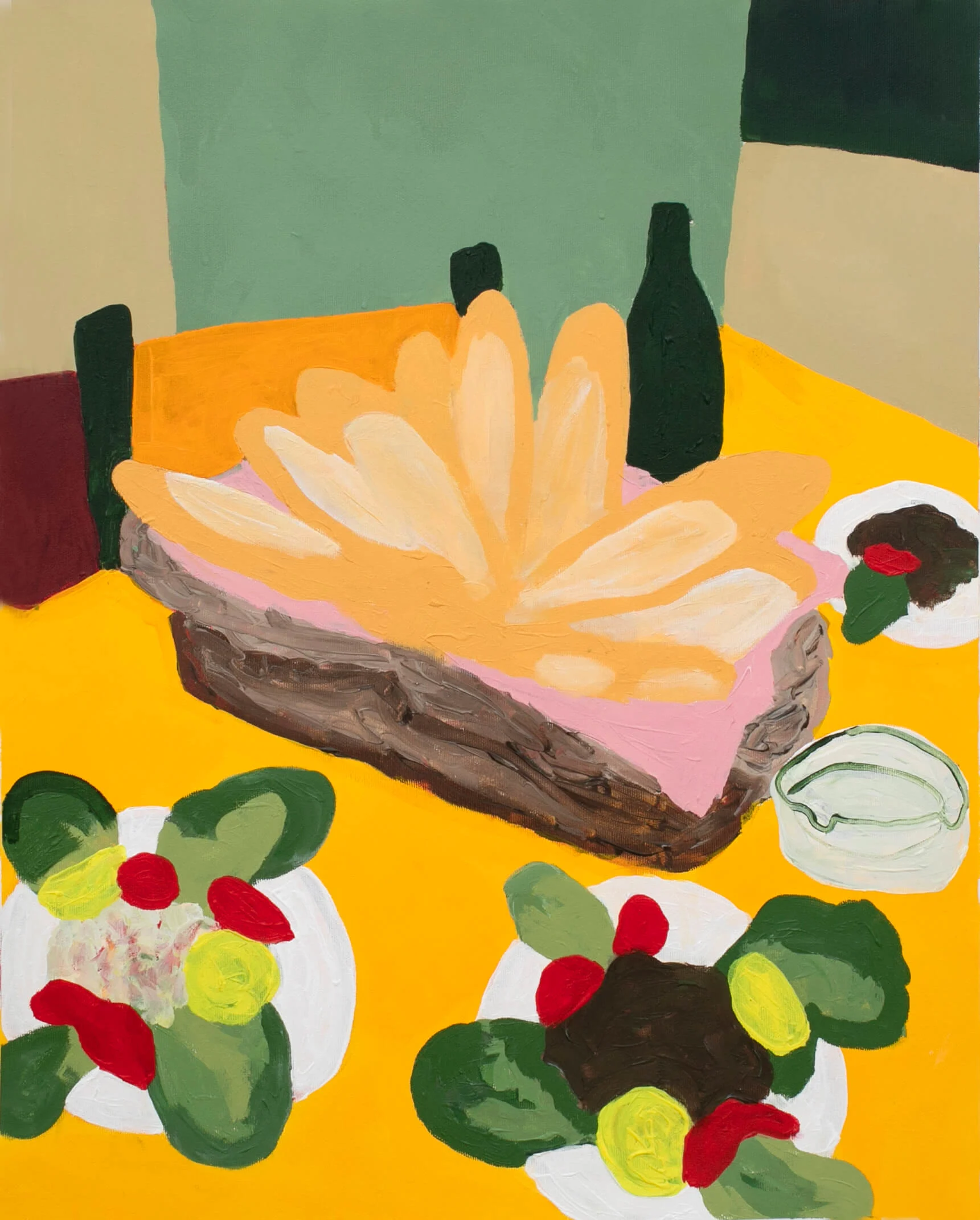
But that’s the special part of being nus-nus. No one fully understands you.
In Tunisian Sceneries, people – with the exception of a couple of hands or torsos – are noticeably absent. Dora is currently finishing a new series, which is now exhibited in a solo show called Bitter Oranges that she organized with Johnson. The pair rented a flat for a month in the neighborhood of La Marsa and hosted one-day events and feature performance works by local artists like Rafram Boaz Chaddad and Souhayl Guesmi, as well as Uzbek-Finnish photographer Satu Saalola. The show features Dora’s multimedia work, including ceramics she made using the traditional Amazigh style of pottery and clay making. But I’m drawn again to the paintings, this time where people – particularly women – are front and center.
“It’s about how it feels being a young mixed woman in Tunisia,” explains Cheffi. “How does it feel to live a non-typical Tunisian life as a woman?” It’s an issue we have both personally grappled with: we both come from more conservative families who expected us to inherently understand social or religious norms. I remember once telling my cousin in a Carrefour, somewhere next to the non-alcoholic beer aisle, that I didn’t believe in God. At the time, it seemed more important to state my very American-grown individual belief than to respect the socio-spiritual norm. I was tired of keeping quiet, and unsurprisingly, I only succeeded in shocking my cousin to her core. If Cheffi’s first body of work was about the intense joy one feels in discovering their roots, Bitter Oranges is about the residual complexity of one’s relationship to their half-country once the novelty has worn off.
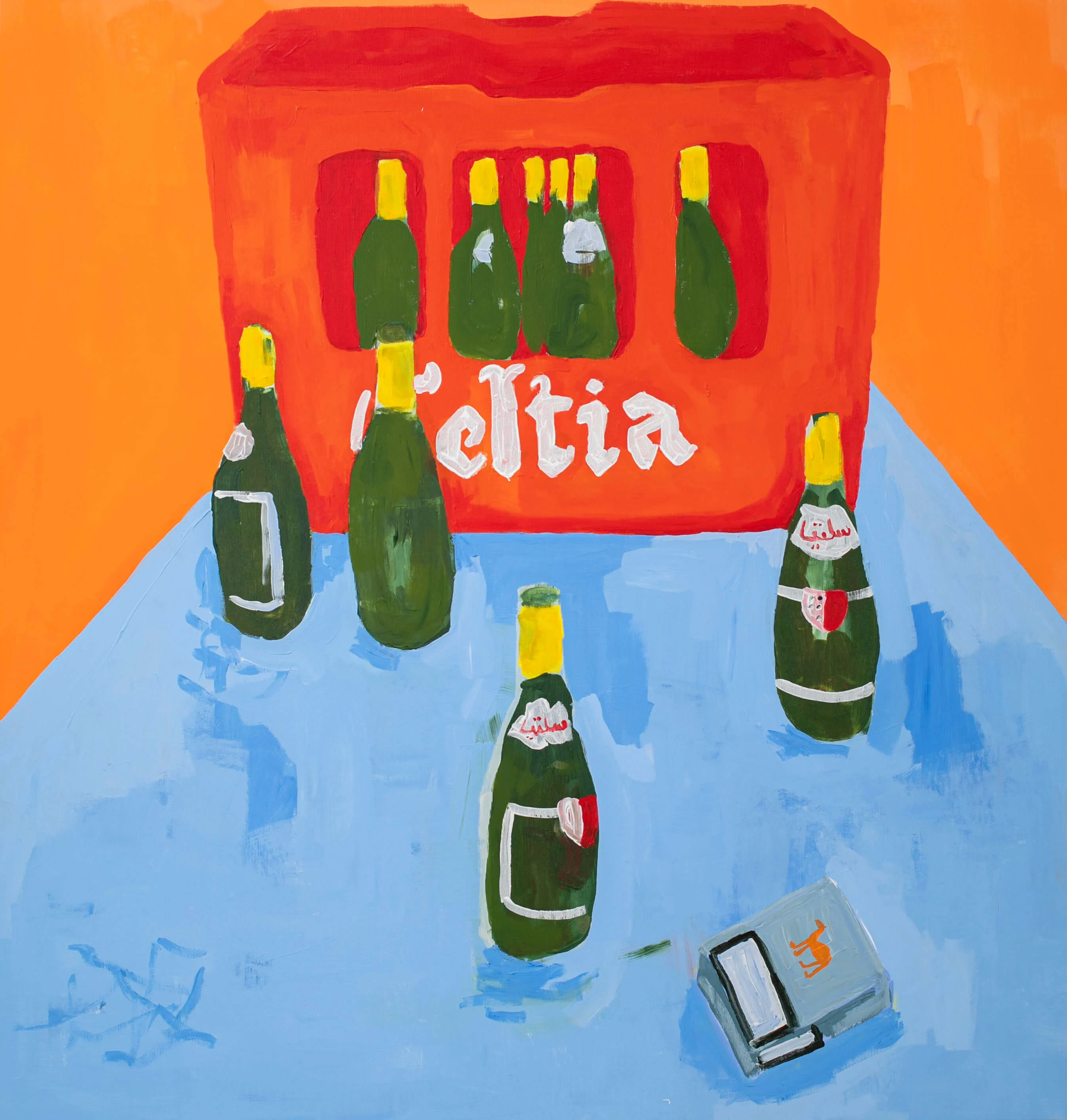
In one of my favorite paintings, a young woman sits at a table, an unopened copy of Yuval Noah Hariri’s Sapiens: A Brief History of Humankind in front of her. The woman is smoking a cigarette and appears to be mid-thought, she is beautiful and casually cool, but it’s the book that stands out to me. At face value I see: a woman in Tunis reading a best-selling book that is available for sale at most airports (this matters if you’re in a country where Amazon packages don’t arrive in two months, let alone two days). I also see the rest: Hariri is an atheist, and Israeli, in Tunis it’s the sort of book that would likely spark more of a conversation about the author himself than the content.
But that’s the special part of being nus-nus. No one fully understands you, so you can read your atheist books and still hang out with your family drinking holy water your grandma has brought back from her hajj to Mecca; both are okay. Or, like Dora, you keep painting and sculpting, carving out a tender slice of inbetweenness for yourself.

